Niitsitapiisini Our Way of Life Exhibit
Niitsitapiisini: Our Way of Life was the result of a groundbreaking partnership between Glenbow Museum and the Blackfoot Confederacy. Eighteen Blackfoot elders worked with Glenbow staff to lead the design of the exhibition and infuse traditional knowledge and contemporary lived experiences into an innovative storytelling experience that shared the history and culture of the Blackfoot people. The exhibition was an important cultural resource for Indigenous and non-Indigenous museum visitors for almost 20 years.
Region:
Southwest Alberta
Field Documentation:
September 25, 2021
Field Documentation Type:
Terrestrial LiDAR
Culture:
Blackfoot
Historic Period:
2021CE
Latitude:
51.04491
Longitude:
-114.061284
Datum Type:
NAD 83
Threat Level
Oki.
Nanista’paisspinnaani ki nitainna’ki’pinnaanistsi nitohkokkinnaan Ihtsipaitapiiyo’pa ki niiksi mattatoyiitapiiksi iitaopiiksi nipaitapiisinnaani. Misstanistsikiipoikiipippoisstoyihpi nitsitsipaitapiihpinnaan anno nitai’ta’ka’passpinnaan ki nitsiiksskonata’psspinnaan. Apamitapiiksi otaaotoohsawa iikitoohkiitsiwa nipaitapiisinnaani ki tokskaistsi nipaitapiisinnaani aistama’kssikaasiwa. Nitsiimaipaitapiihpinnaan. Nitssakiainai’tsi’pinnaani nitomai’taksinnaanistsi. Nitaisaakiaawaatowa’psspinnaan ki nitsiimaitsina’psspinnaan niipaitapiisini.
Kitahkoohkotsistapi’tsi’powawa nanistsipaitapiihpinnaani. Ahkohkitsitsoki’tomanistaopao’p anno ksaahkoyi.
Oki. Hello.
Our traditions and values were given to us by the Creator and the spirit of the Other Beings in our world. For thousands of years we were a strong and independent people who understood our relationship with everything around us. The Europeans brought great changes, some of which threatened our culture. Still, we have survived. Our core values are still important to us. Our ceremonies continue to affirm our connection with the world around us.
We hope you will learn from our story and understand who we are. In this way, all of us will be able to live together in this land. – Learn more

The Glenbow and Territory
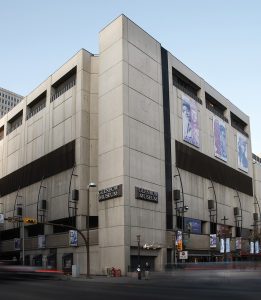
The Glenbow Museum is located in Mohkintsis, now known as Calgary, on Treaty 7 territory [1]. This area is the traditional territory of Niitsitapi from the Blackfoot Confederacy, which includes Siksika, Piikani and Kainaiwa; as well as that of the Îyârhe Nakoda of the Chiniki, Bearspaw, and Wesley Nations; and the Dene of the Tsuut’ina Nation; as well as the Métis Nation Region III [1]. The contributions of these groups are a fundamental part of Glenbow’s mission in educating visitors on the heritage of this land [1].
Glenbow History
The Glenbow Museum is a regional art and history museum, which focuses on the art and culture of Western Canada. The Glenbow was established as a non-profit in 1954 by the “West’s” most notable businessman, petroleum entrepreneur, and lawyer Eric Lafferty Harvie [2]. As one of the richest men in Canada, Harvie collected objects from across the world including artifacts from Asia, West Africa, South America, and the South Pacific. These personal collections of Harvie’s formed the basis of the first collections at the Glenbow, which was formed with the vision that it would be “Where the World Meets the West.” In 1966, Harvie donated his collections to the Province of Alberta as a centennial gift [2]. In 1976 the Glenbow moved into its current location in what is now downtown Calgary. The museum focuses on the art and culture of Western Canada showcased through 93,000 square feet of exhibit space [2].
In 1988, the Glenbow became the centre of a political boycott over the exhibition The Spirit Sings [2,3]. This exhibit was criticized by Indigenous leaders throughout Canada due to the exclusive corporate sponsorship provided by the Shell Oil company, who were responsible for the destruction of the Lubicon’s lifestyle [3]. The protests of this exhibit led to a radical rethinking of the relationships between Canadian Museums and Indigenous people [2].
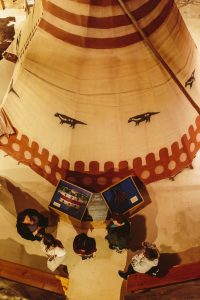
Niitsitapiisini Way of Life Exhibit
The Niitsitapiisini: Our Way of Life, The Blackfoot Gallery exhibit is the result of this rethought relationship and the ground-breaking partnership between the Glenbow Museum and the Blackfoot Confederacy [4]. Eighteen Blackfoot Elders lead the design of the exhibition, working with Glenbow staff to combine traditional knowledge and lived experiences into an “innovative storytelling experience that shared the history and culture of the Blackfoot people” [4].
This collaboration process took place over four years between 1997 and the opening of the exhibit on November 3, 2001. For the last 20 years, this exhibit has been an important educational resource on the culture, history, and lifeways of the Niitsitapiisini for both Indigenous and non-Indigenous visitors to the museum [4].
The project team for this exhibit included:
Doreen Blackweasel (Amsskaapipikani), Tom Blackweasel (Amsskaapipikani), Andy Black Water (Kainaiwa), Jenny Bruised Head (Kainaiwa), Clifford Crane Bear (Siksika), Louise Crop Eared Wolf (Kainaiwa), Charlie Crow Chief (Kainaiwa), Rosie Day Rider (Kainaiwa), Carrie First Rider (Kainaiwa), Earl Old Person (Amsskaapipikani), Allan Pard (Apatohsipikani), Jerry Potts (Apatohsipikani), Pat Provost (Apatohsipikani), Pete Standing Alone (Kainaiwa) Jim Swag (Apatohsipikani), Donna Weaselchild (Siksika) Frank Weasel Head (Kainaiwa), Clarence Wolfleg (Siksika) and Herman Yellow Old Woman (Siksika) (Glenbow our way of life).
Exhibit Closure and Digital Documentation
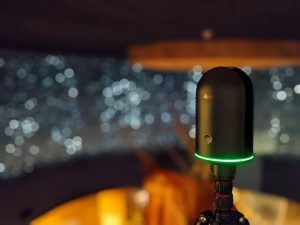
After nearly 50 years of operation, the Glenbow Museum has temporarily closed its doors for renovations to upgrade the building. Many mechanical systems need to be replaced, asbestos must be removed from the building, and environmental systems upgraded. The Niitsitapiisini Gallery needs to be removed for this process as the objects would not be safe during the renovation work.
Prior to the disassembly and relocation of the exhibit, it was digitally documented by the University of Calgary using a Leica BLK 360 terrestrial laser scanner. This will ensure that throughout the museums’ closure the exhibit and its contents are still virtually accessible to those who wish to use it, and will remain so even after the updated exhibition opens in 2024.
Notes:
This site is located on Treaty 7 Territory of Southern Alberta, which is the traditional and ancestral territory of the Blackfoot Confederacy: Kainai, Piikani and Siksika as well as the Tsuu T’ina Nation and Stoney Nakoda First Nation. This territory is home to the Métis Nation of Alberta, Region 3 within the historical Northwest Métis Homeland. We acknowledge the many First Nations, Métis and Inuit who have lived in and cared for these lands for generations. We are grateful for the traditional Knowledge Keepers and Elders who are still with us today and those who have gone before us. We make this acknowledgement as an act of reconciliation and gratitude to those whose territory we reside on or are visiting.
[1] Glenbow. 2021. About Glenbow. Electronic document, https://www.glenbow.org/about/, accessed October 16, 2021.
[2] Onciul, B. 2021. Introduction in Museums, Heritage, and Indigenous Voice: Decolonizing Engagement, pp. 1-25. Routledge, New York.
[3] Dibblet, D. 1988. Nations Gather to Protest Glenbow’s Spirit Sings Exhibit. Windspeaker Publication, electronic document, https://ammsa.com/publications/windspeaker/nations-gather-protest-glenbows-spirit-sings-display, accessed October 16, 2021.
[4] Glenbow. 2021. Niitsitapiisini Our Way of Life. Electronic document, https://www.glenbow.org/exhibitions/niitsitapiisini-our-way-of-life/, accessed October 16, 2021.
[5] Glenbow. 2021. Learn. Electronic document, https://www.glenbow.org/indigenous-resources/blackfoot-culture-and-history/, October 16, 2021.
The images in this gallery are courtesy of the Glenbow Museum and the Capture2Preserv project. Please click on the images for additional source information.
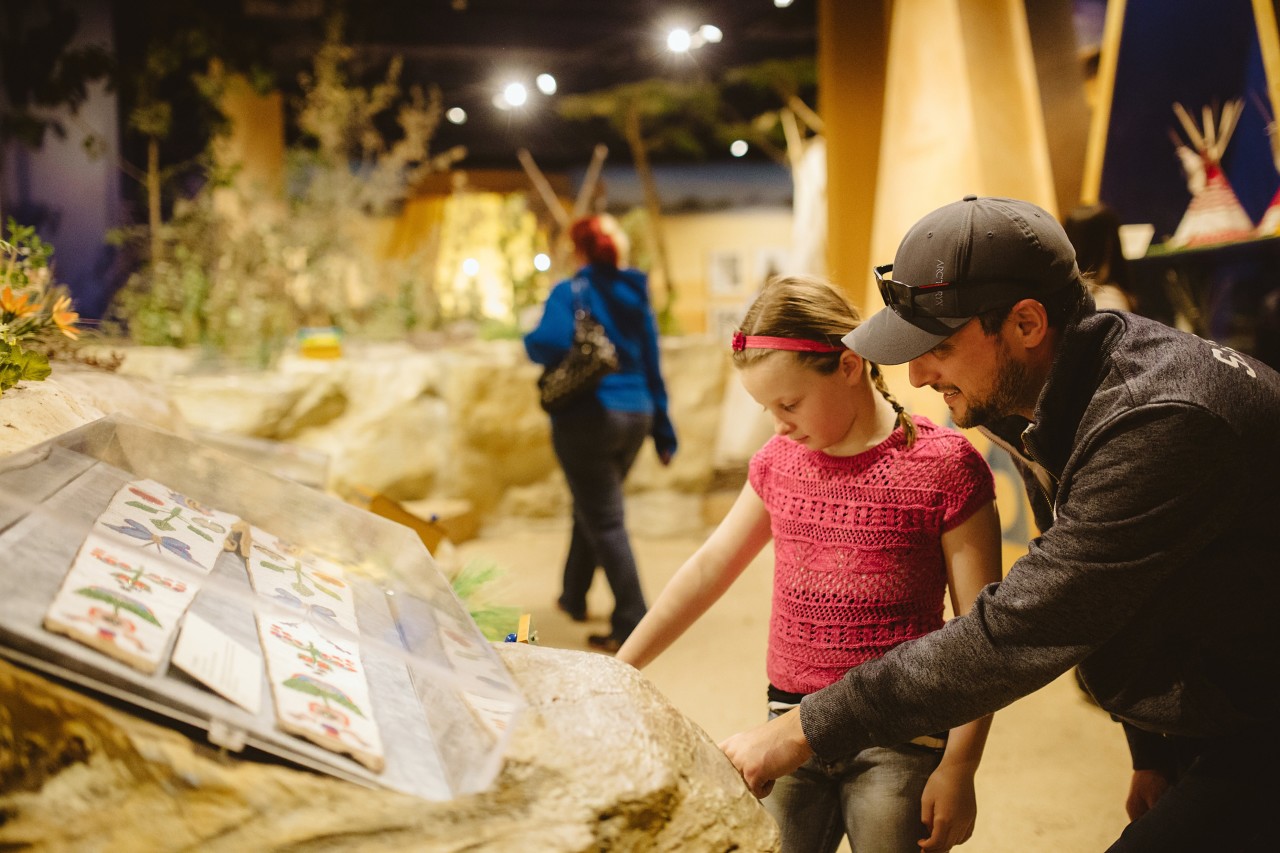
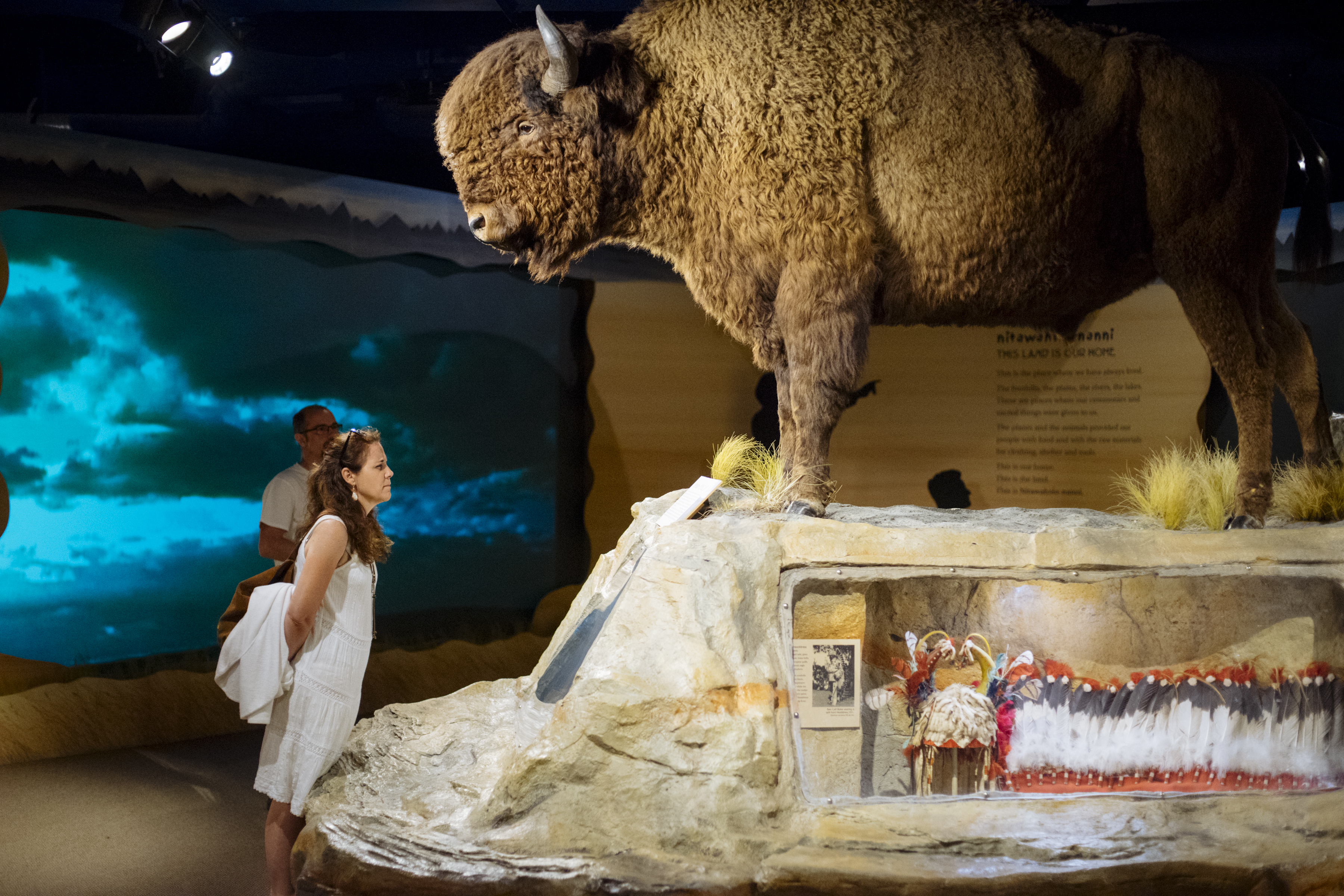
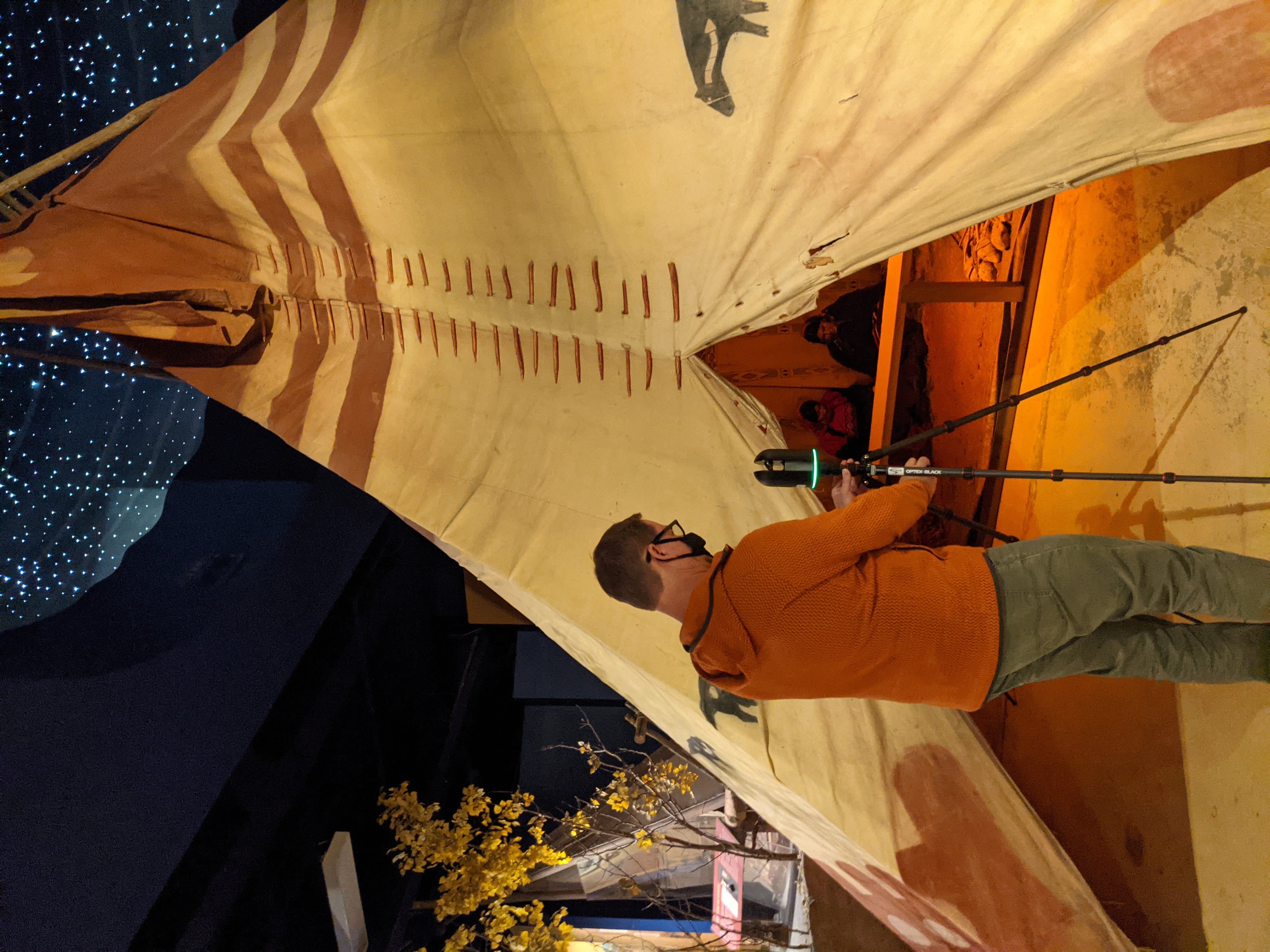
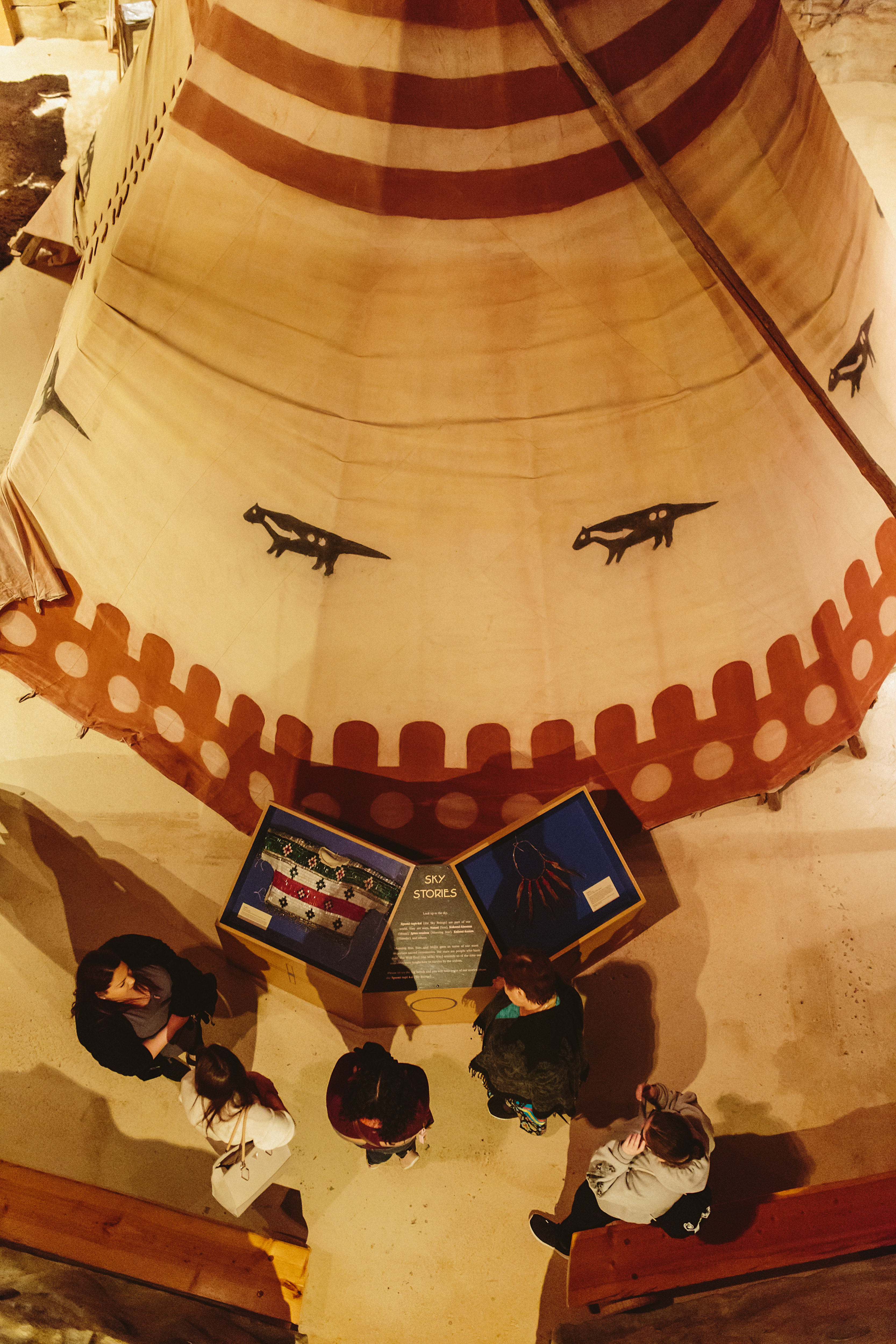

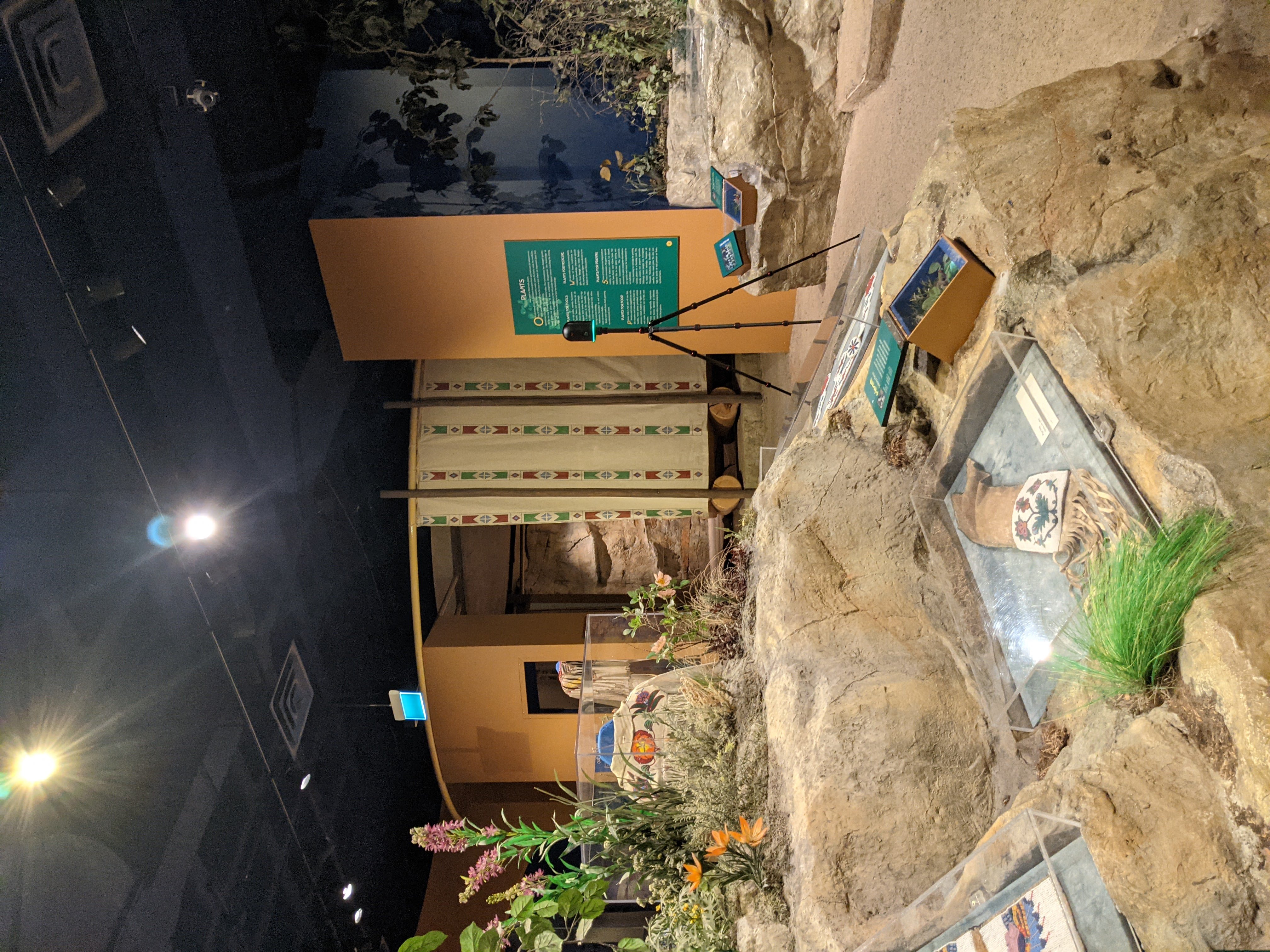
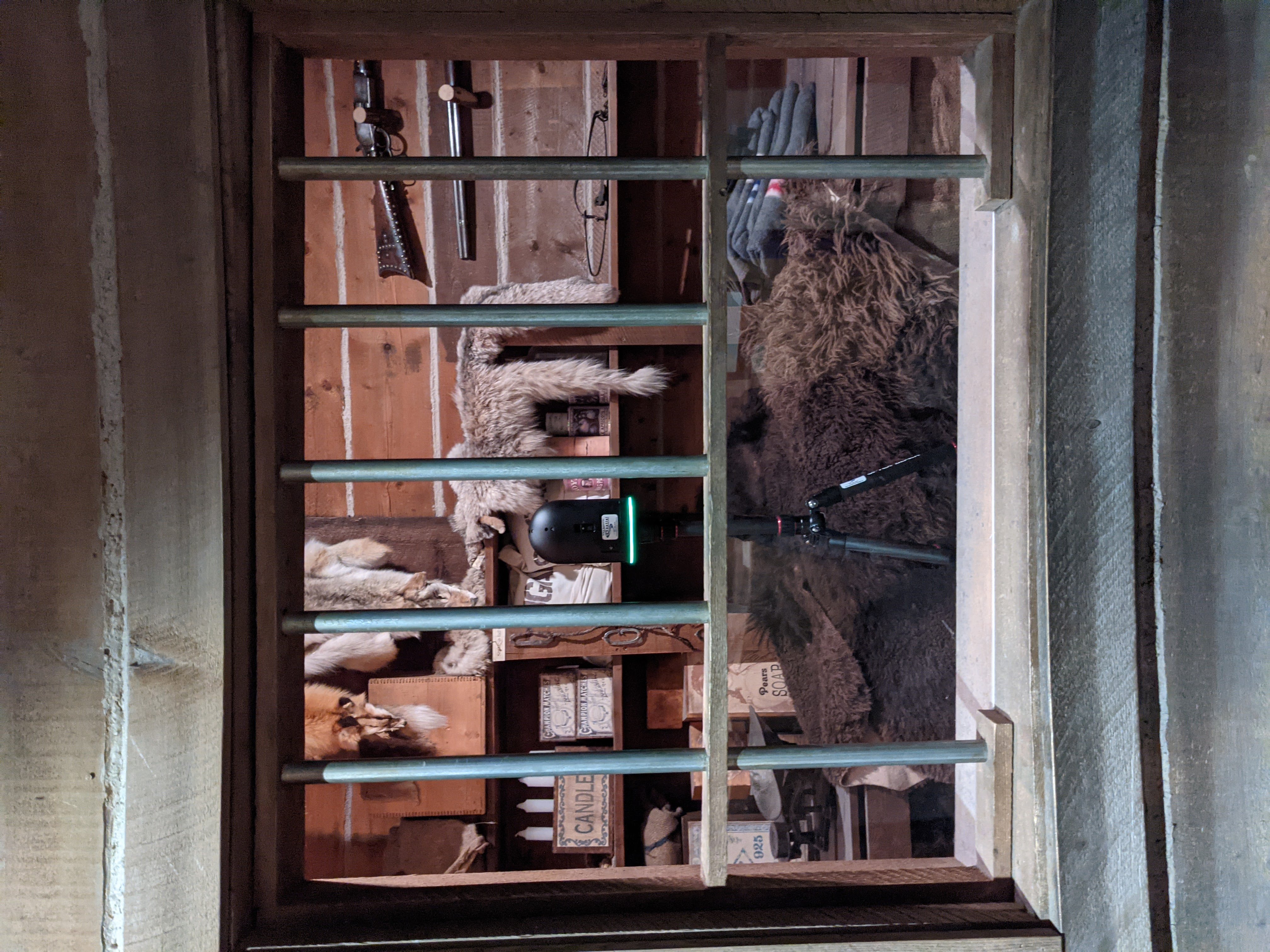
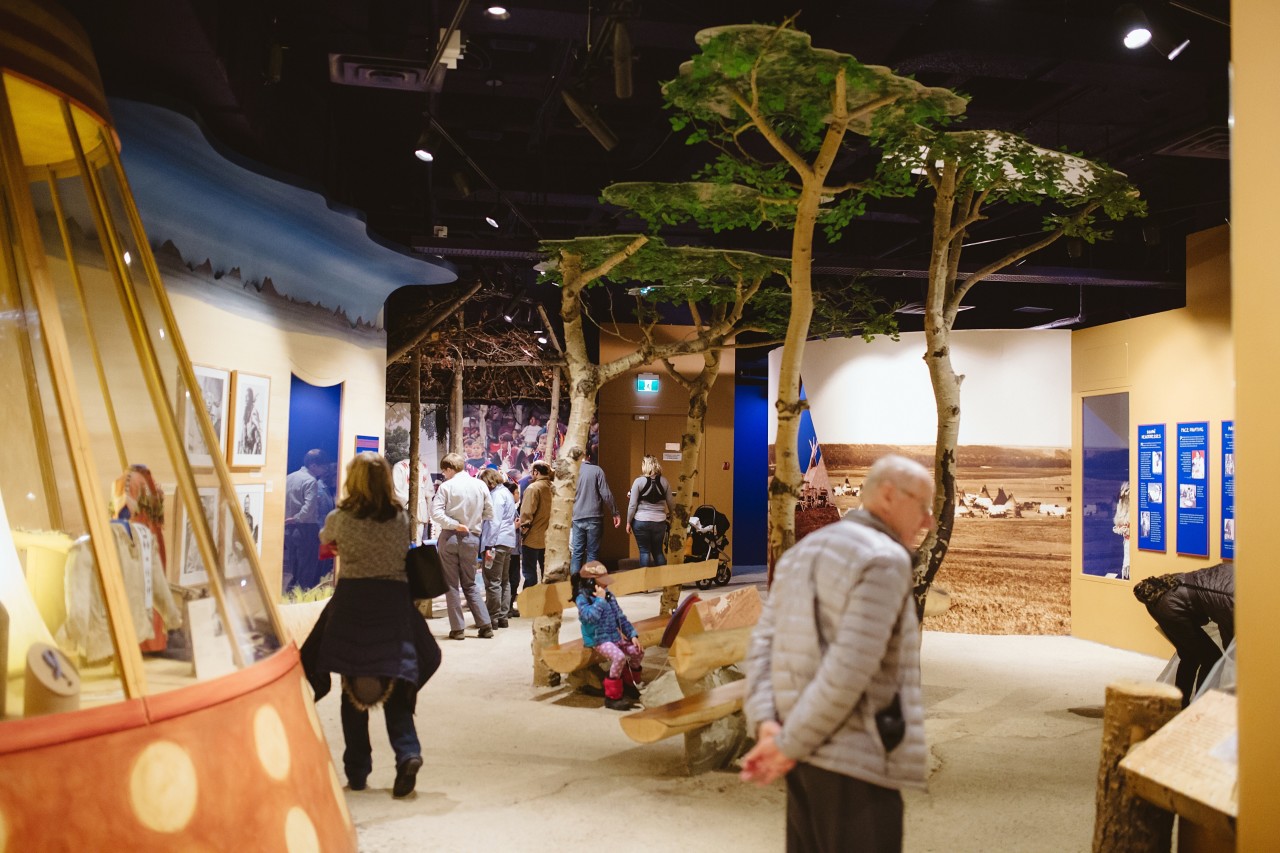
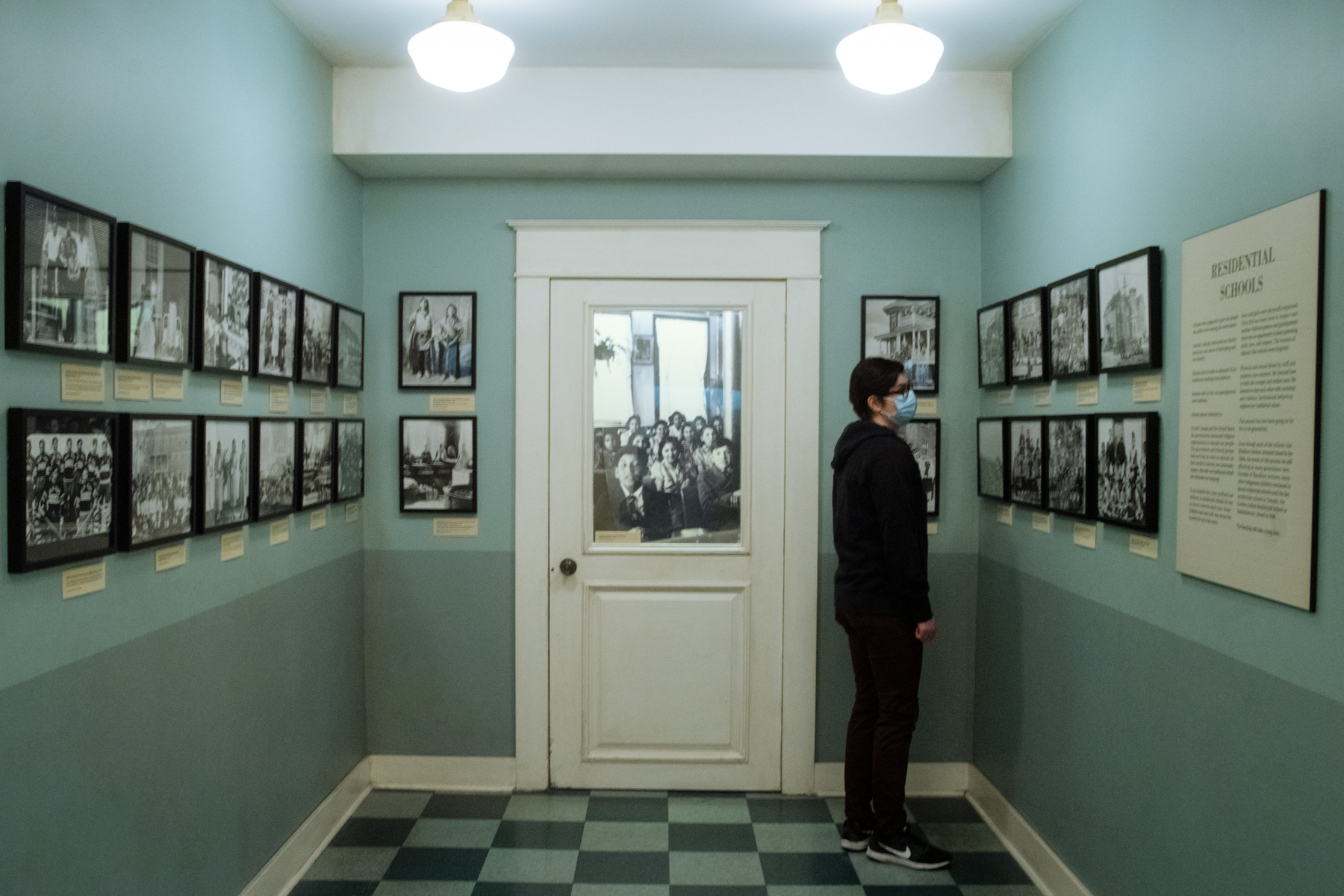
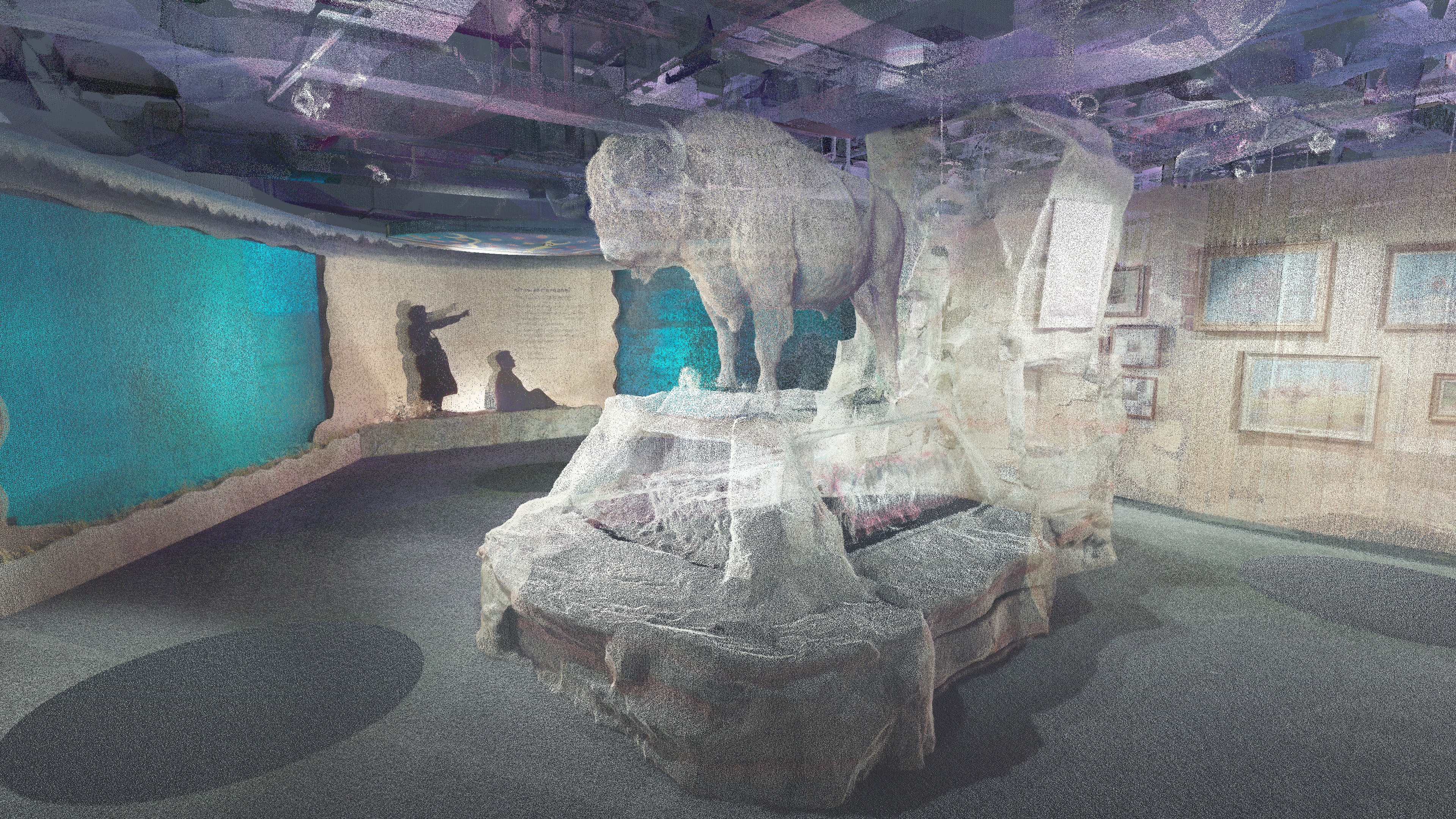
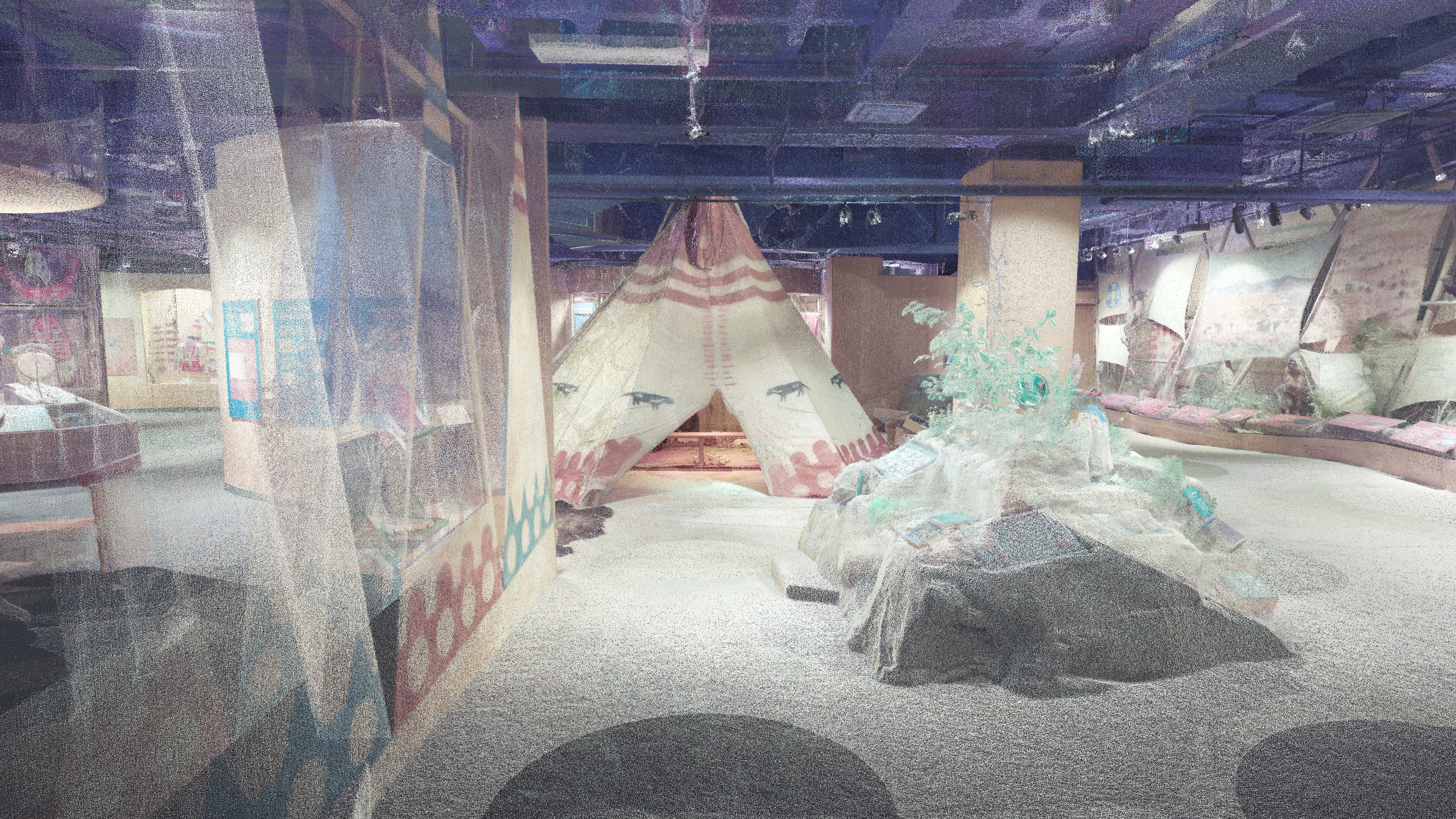
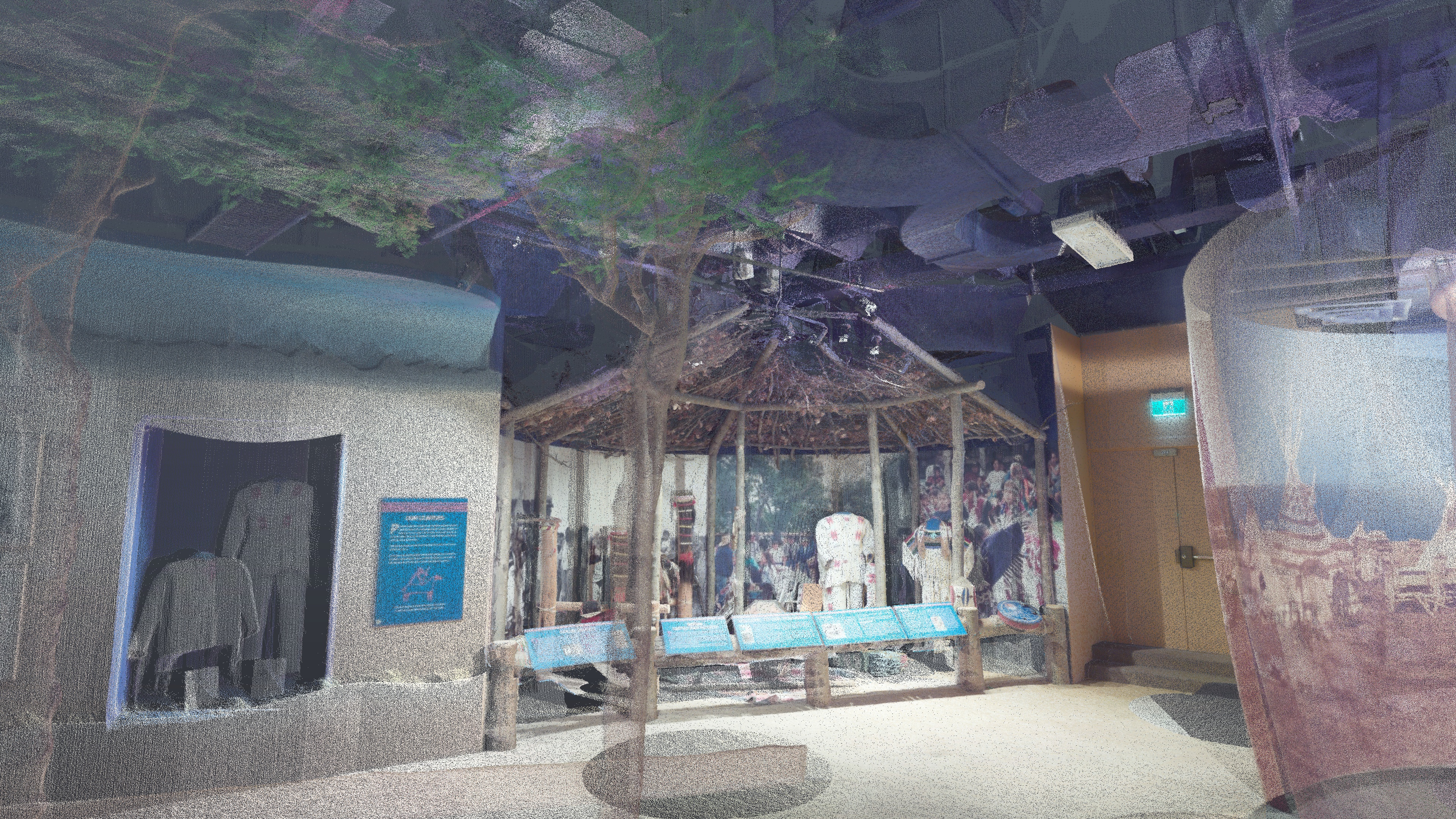
Digitally Capturing the Niitsitapiisini Our Way of Life Exhibit at the Glenbow Museum
The Capture2Preserv Team worked with the Glenbow Museum to capture the Niitsitapiisini Our Way of Life Exhibit prior to its disassembly and relocation. The exhibit was recorded with the Leica BLK 360 Laser Scanner with a total of 65 scan positions. The scans were registered using Cyclone Register 360 (BLK edition) and then exported into Autodesk Recap Pro V. 22 for further processing. Below are a selection of the panoramic images from the Leica BLK 360.
Scan Locations
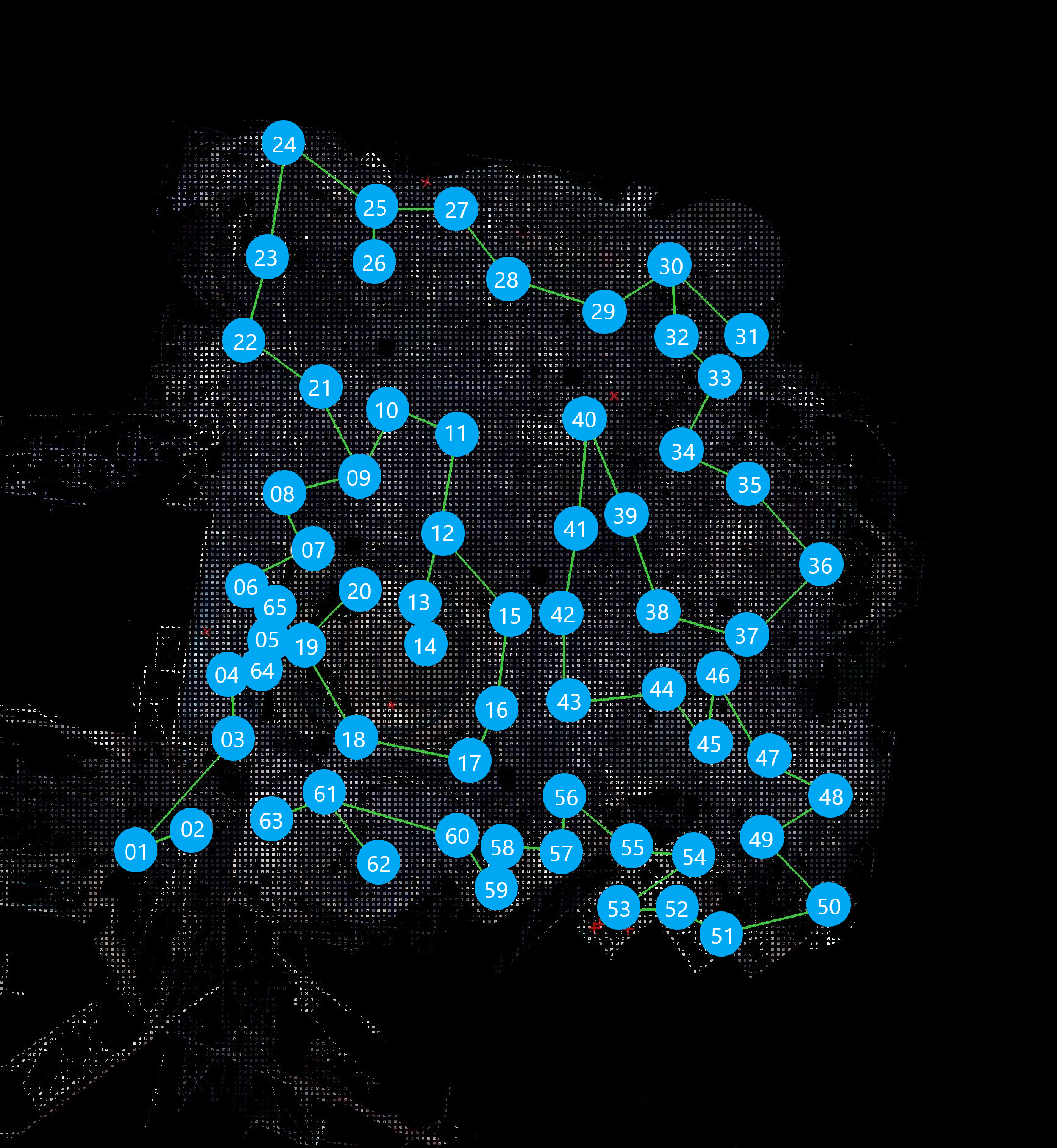

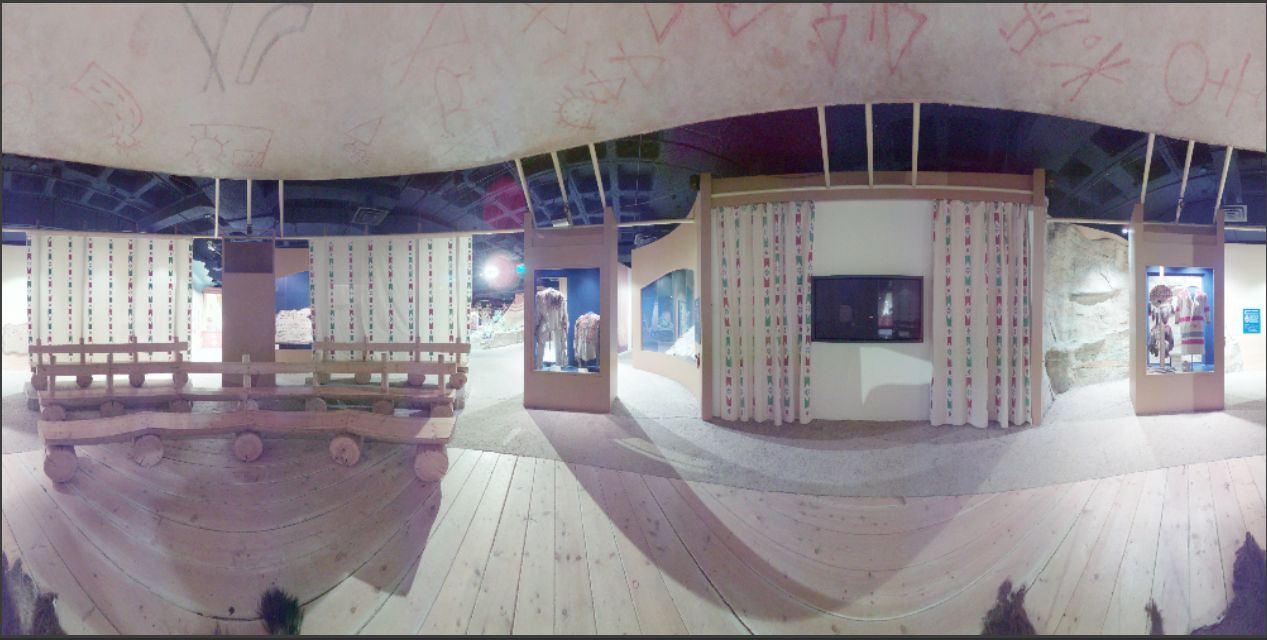
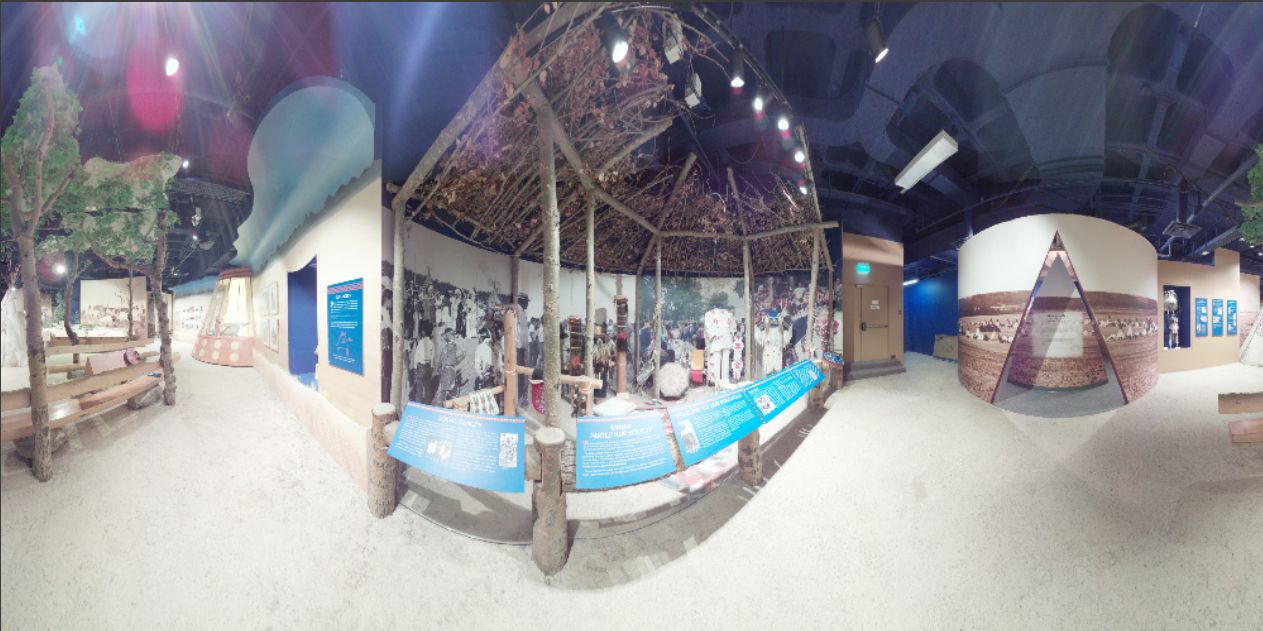
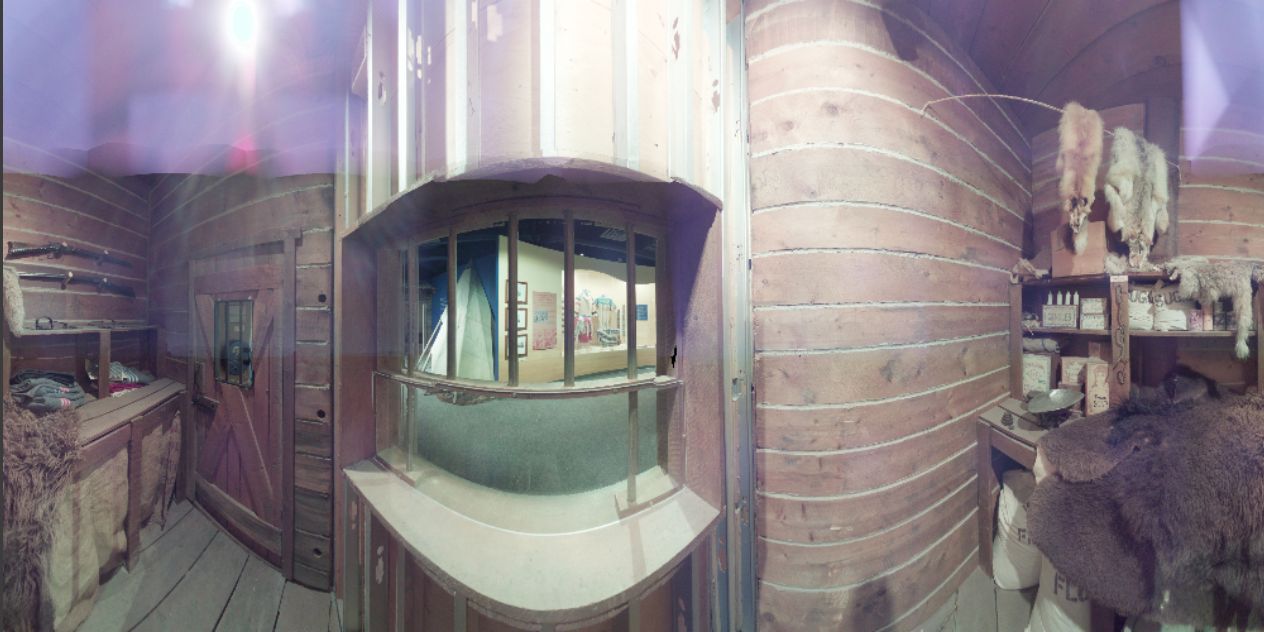
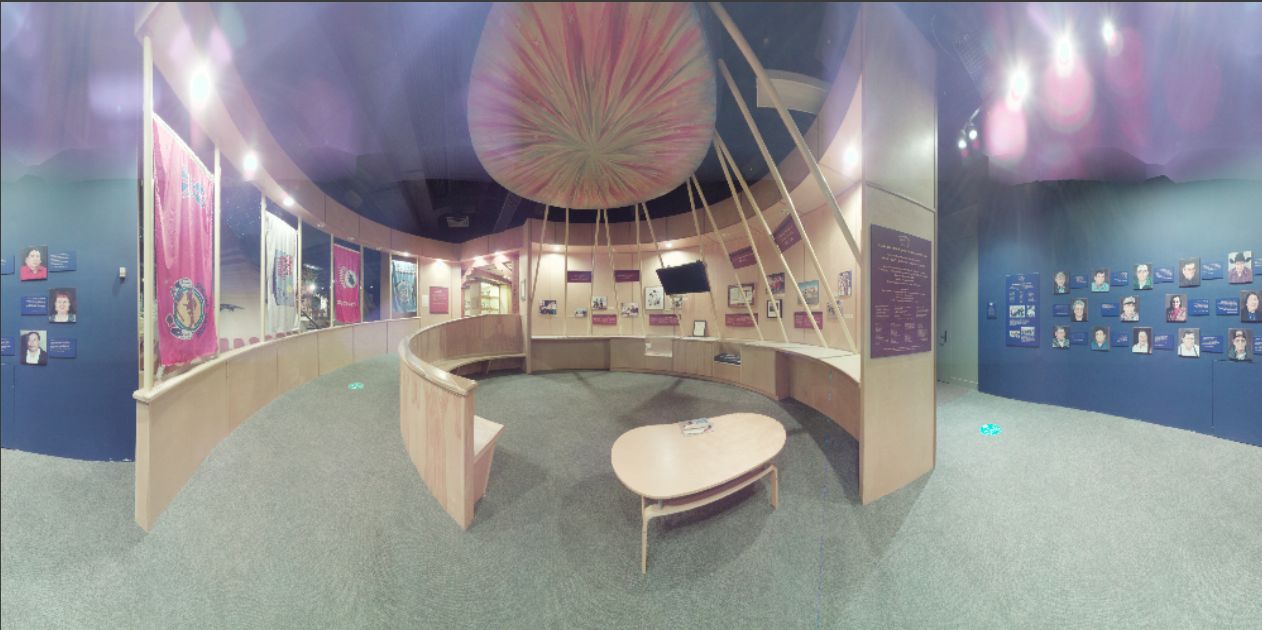
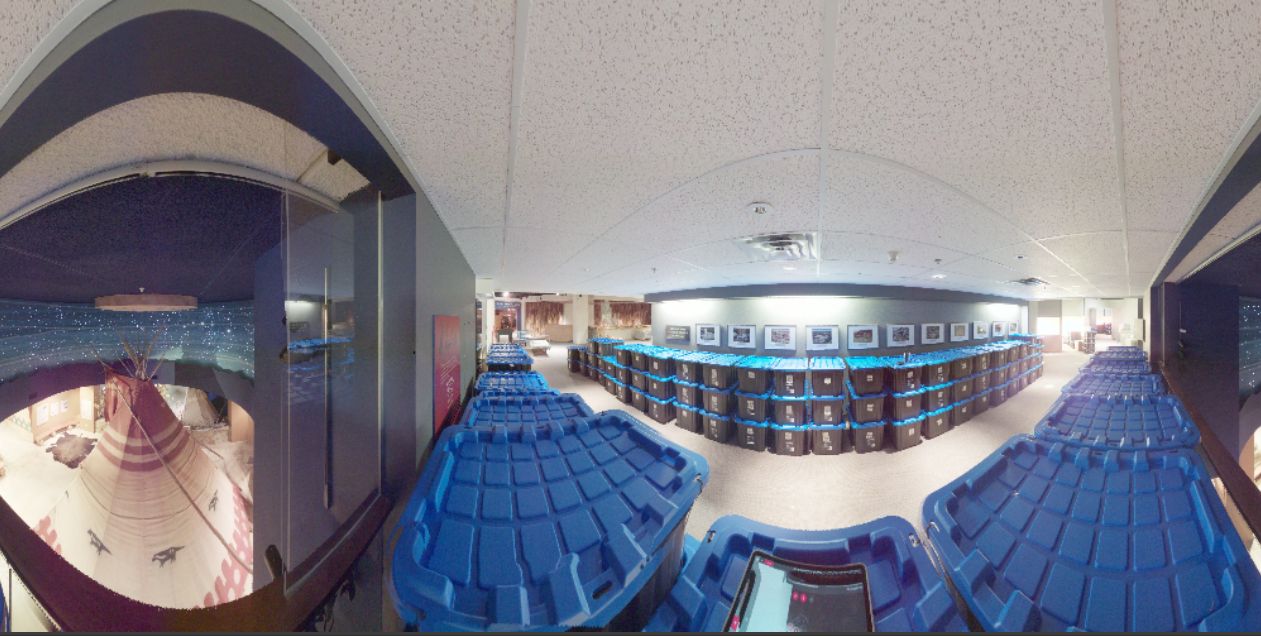
Open Access Scanning Data
The raw data files for this project are available for download from the archive repository. Scans are .las file format. Please download the metadata template to access metadata associated with each file. All data is published under the Attribution-Non-Commercial Creatives Common License CC BY-NC 4.0 and we would ask that you acknowledge this repository in any research that results from the use of these data sets. The data can be viewed and manipulated in CloudCompare an opensource software.
